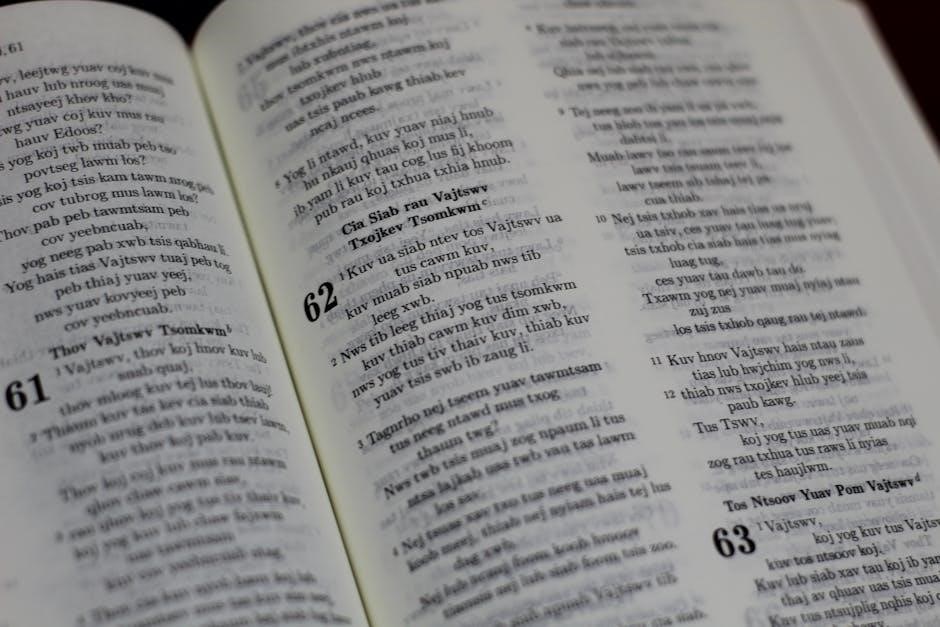
Volos Guide to Monsters Overview
This guide is a supplement for the Dungeons & Dragons role-playing game, offering a deep dive into monster lore. It goes beyond simple stat blocks, exploring monster societies, behaviors, and origins. This book provides exciting content for both players and Dungeon Masters alike, and it is a great addition to your collection.
What is Volo’s Guide to Monsters?
Volo’s Guide to Monsters is a supplemental sourcebook for the fifth edition of Dungeons & Dragons, designed to enrich the game experience by providing extensive lore and details about various iconic monsters. Unlike a standard monster manual, it delves into the cultures, societies, and lairs of creatures, offering a deeper understanding beyond basic combat statistics. The book is written from the perspective of the fictional explorer Volothamp Geddarm, adding a unique in-world voice to the monster descriptions. This approach offers Dungeon Masters invaluable resources for crafting immersive adventures, while also providing players with fascinating insights into the creatures they might encounter. It also introduces new player character races for more diverse gameplay. The guide explores the lives, motivations, and habitats of these creatures, moving beyond simple combat encounters. It includes detailed information about giants, mind flayers, orcs, goblinoids, and others, making it a great resource for any DM. The book also includes new stat blocks for monsters. It also includes lore for the worlds greatest roleplaying game.
Content Focus of Volo’s Guide
The primary focus of Volo’s Guide to Monsters is to provide an in-depth exploration of various monster groups, going beyond the typical stat blocks found in the Monster Manual. The book heavily emphasizes the lore, behavior, and social structures of iconic creatures like Beholders, Giants, Goblinoids, Mind Flayers, Orcs, and others. It aims to present these monsters not just as adversaries, but as complex entities with their own cultures and motivations. This approach allows DMs to create more engaging encounters, that are woven into a broader narrative. The guide offers a wealth of information about how these creatures live, where they dwell, and their relationships with each other. It explores their lairs, rituals, and societal hierarchies, adding layers of detail to their presentation in the game. Additionally, the book introduces new player character races. The guide also provides unique monster stat blocks. The book also includes monsters new to the fifth edition. The goal is to give players and DMs a more immersive and detailed experience.

Key Monster Lore Sections
This section delves into the lore of iconic monsters, providing details about their origins, behavior, and social structures. Key groups include Beholders, Giants, Goblinoids, Mind Flayers, and Orcs, offering DMs a wealth of information for enriching their campaigns and bringing these creatures to life.
Beholders⁚ Lore and Behavior

Beholders, as detailed in Volo’s Guide, are not simply monstrous threats; they are complex beings with unique origins and motivations. Their lore reveals them as tyrannical, paranoid creatures, each believing itself to be the epitome of beholder perfection. This inherent narcissism drives their behavior and shapes their interactions with the world. Beholders are not merely chaotic monsters; they possess a calculated, albeit twisted, intelligence. They establish lairs that are strategically advantageous, often employing their varied eye beams to create deadly traps and defenses. The book explores the different types of beholders and their varying levels of power, from the standard beholder to the larger and more dangerous variations. The text delves into their thought processes, showcasing their tendency towards paranoia and their intense dislike for other beholders, which often results in fierce conflicts. Understanding these intricate details can greatly enhance a Dungeon Master’s ability to portray beholders as more than just a combat encounter. The guide shows how to give them depth, making them a truly memorable antagonist. The lore presented encourages DMs to use the beholder’s quirks in their narratives, making them a truly formidable and unique foe.
Giants⁚ Culture and Lairs
Volo’s Guide to Monsters provides an in-depth look at the varied cultures and lairs of giants, moving beyond the typical brute image. The guide explores the social structures of different giant types, such as hill giants, stone giants, frost giants, fire giants, and cloud giants. It highlights how their environment and beliefs shape their societies, from the crude, disorganized nature of hill giants to the more sophisticated and hierarchical structures of cloud giants. The book details the types of habitats these giants favor, from the rough terrains of the mountains to the icy plains and the cloud-covered peaks. These locations are not just random; they often reflect the unique culture of each giant type, showcasing how their lives are intertwined with their surroundings. Furthermore, the guide provides details on the construction and use of their lairs, emphasizing their resourcefulness and their ability to adapt to their environment. This knowledge allows DMs to create more realistic and immersive giant encounters, giving players a glimpse into the complex world of giants, making them more than just large creatures to fight.

Goblinoids⁚ Social Structures
Volo’s Guide to Monsters delves into the complex social structures of goblinoids, including goblins, hobgoblins, and bugbears, going beyond their reputation as simple monsters. It explores how these creatures organize themselves, from the chaotic and opportunistic nature of goblins to the disciplined and militaristic approach of hobgoblins. The guide highlights the tribal hierarchies that exist within goblin societies, often led by the strongest or most cunning among them. It further details the complex social structure of hobgoblins, revealing their well-organized military hierarchy, complete with leaders, warriors, and specialized roles. Bugbears, on the other hand, are portrayed as stealthy and solitary hunters, often operating independently or as mercenaries. Volo’s Guide also explores how these social structures influence their behavior, tactics, and interactions with other races. It provides insights into their motivations and their relationship to other creatures, such as their worship of Maglubiyet and their complex interactions with other races; This knowledge enables Dungeon Masters to create realistic and immersive encounters, allowing players to engage with goblinoids on a deeper level.
Mind Flayers⁚ Origins and Motives
Volo’s Guide to Monsters provides a fascinating exploration into the mysterious origins and complex motives of mind flayers, also known as illithids. It delves into their ancient history, revealing that they hail from a far-off dimension. The guide describes their life cycle, from the parasitic tadpole to the full-fledged mind flayer, and their reliance on the brains of other creatures for sustenance. It sheds light on the illithids’ hive mind, a collective consciousness that connects them to their elder brain, a massive creature that serves as a central intelligence. The book explores their relentless pursuit of knowledge and domination. It shows how they seek to enslave and control other races to serve their own purposes. Volo’s Guide also examines their interactions with other races, often through deceit and manipulation, and their tendency to create thralls out of those they dominate. It highlights the illithids’ disdain for other species, viewing them as mere resources. This background allows DMs to create compelling storylines involving mind flayers, using their unique motivations to drive conflict and create engaging narratives for the players.
Orcs⁚ Tribal Life and Warfare
Volo’s Guide to Monsters offers a detailed examination of orcish tribal life and their relentless pursuit of warfare. It provides insights into their social structures, often built around strength and dominance, where the strongest orc leads the tribe. The guide describes the various roles within orcish society, from the fierce warriors to the cunning shamans. It sheds light on their brutal customs and rituals, often involving displays of aggression and the worship of violent gods. The book explores their motivations for raiding and conquest, driven by a desire for plunder and territory. It also showcases the different types of orc warbands, each with its own tactics and favored weapons. Volo’s guide details the orcs’ use of crude but effective weaponry, their reliance on brute force, and their often disorganized battle formations. It further explains how their tribal structure influences the way they approach conflicts and the importance of displaying personal power on the battlefield. These details help DMs create engaging and challenging encounters with orcs, adding depth to their campaigns.

Additional Content
Beyond monster lore, this guide provides new player character races, expanding options for players. It also includes unique monster stat blocks, adding new creatures for Dungeon Masters to use in their campaigns, enriching game play, and making it more exciting for everyone.
New Player Character Races
This section of Volo’s Guide to Monsters introduces several new playable races, expanding the options available to players beyond the core races in the Player’s Handbook. These new options allow players to embody characters with unique origins and abilities, adding depth and variety to their gameplay experience. Included are races like the monstrous goblins, the intimidating orcs, the fish-like tritons, and the enigmatic aasimar, each presenting distinct cultural backgrounds and gameplay mechanics. These races are not just reskins of existing options, but come with their own specific traits, languages, and roleplaying opportunities, encouraging players to explore different character archetypes and styles. The addition of these races opens up a plethora of storytelling possibilities, enabling players to create characters who are outcasts, adventurers with unusual heritages, or individuals from remote corners of the D&D world, enriching their gaming experience and allowing for more diverse narratives within the game.
Unique Monster Stat Blocks
This section provides a wealth of new monster stat blocks, going beyond the standard creatures found in the Monster Manual. These stat blocks are not just variations of existing monsters, but introduce entirely new creatures with unique abilities and challenges. Dungeon Masters can use these diverse stat blocks to create memorable encounters that test their players’ skills and strategies. The guide includes stat blocks for various types of monsters, from lesser minions to powerful boss-level adversaries, allowing for a wide range of encounter difficulties. These monster entries often come with detailed descriptions, behavior patterns, and lore, enhancing the narrative aspects of the game. The unique stat blocks also add variety to combat, forcing players to adapt to new tactics and unexpected abilities, making each encounter fresh and engaging, and avoiding the monotony of fighting the same types of creatures over and over. This section also often includes specialized variants of existing monsters, making it a valuable resource for Dungeon Masters seeking to diversify their campaigns.


